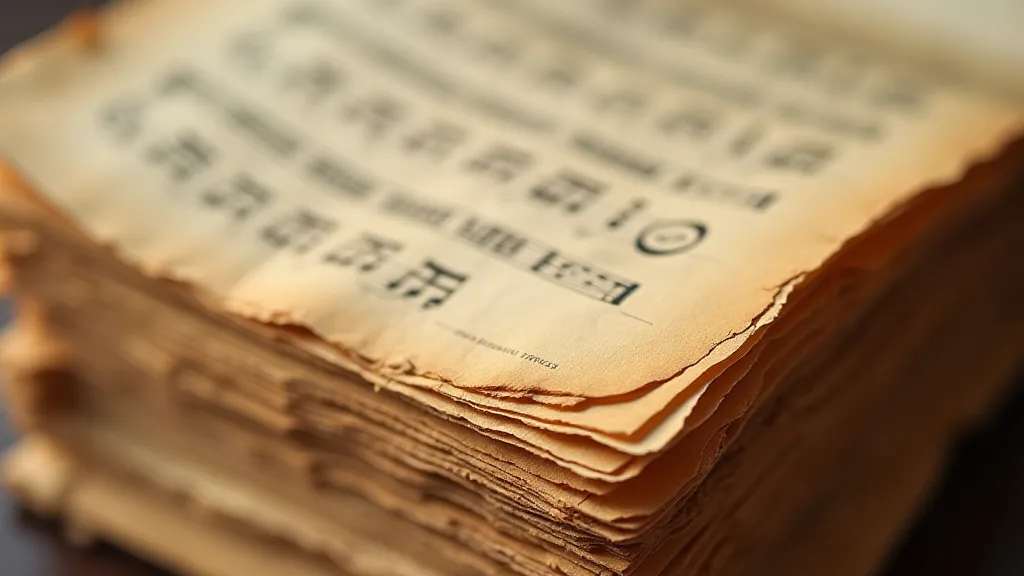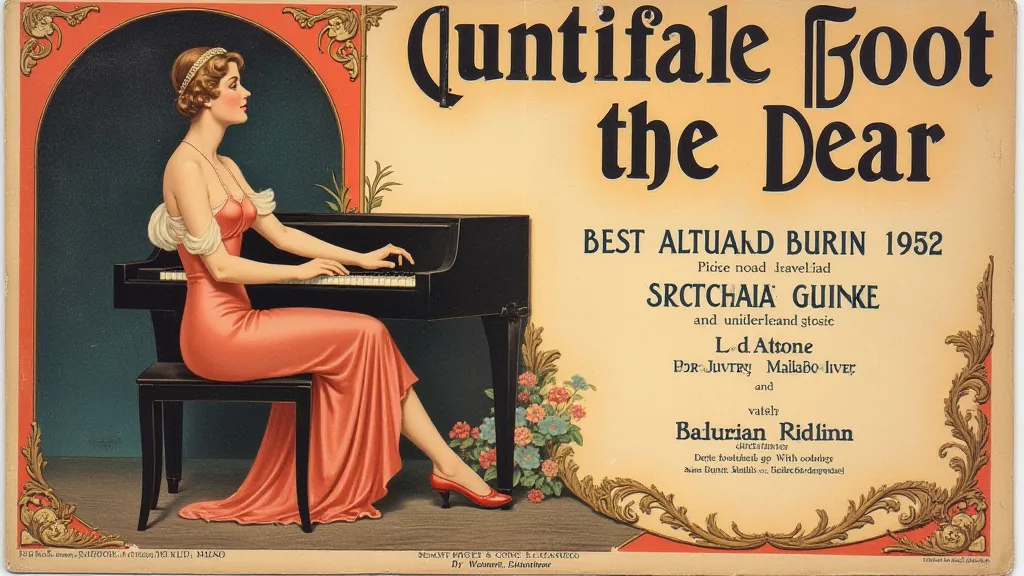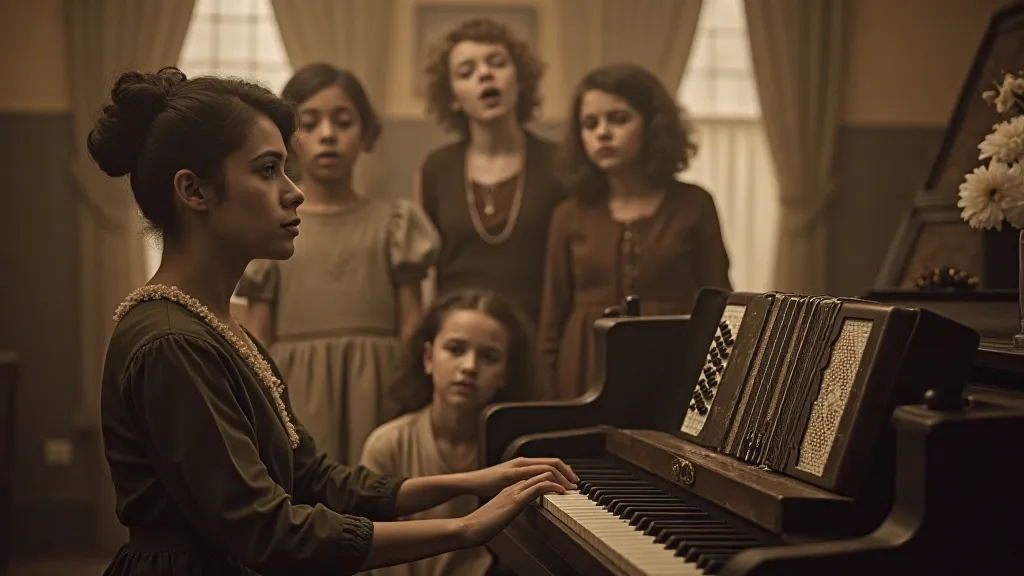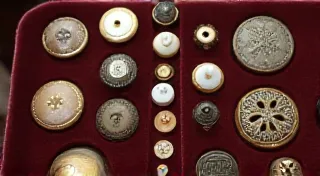The Ledger's Lament: How Printing Technology Shaped Musical Accessibility
There’s a particular scent that clings to vintage sheet music – a blend of aged paper, dried ink, and a faint echo of countless hands that have turned its pages. It's a scent that takes me back, not to my own past necessarily, but to a world vibrating with a nascent musical culture, a culture irrevocably shaped by the slow, steady march of printing technology. I remember finding a stack of deteriorating sheet music at an estate sale years ago. Among the popular show tunes and patriotic anthems, I discovered a faded copy of "The Entertainer" by Scott Joplin. Holding that brittle paper, feeling the almost ghostly impressions of the printer's type, I felt a connection to the past that transcended mere historical interest. It wasn't just music; it was a tangible representation of how music reached, inspired, and ultimately defined generations.

Before the Press: Music’s Restricted Audience
Before the mid-19th century, music was largely the domain of the wealthy and educated. Composers wrote for orchestras and choirs, accessible only to those who could afford tickets or were skilled enough to participate. Imagine a world where experiencing a Beethoven symphony meant attending a private performance hosted by a nobleman or possessing the considerable skill to perform it yourself – a reality for most. Manuscript copying was laborious and expensive. Each copy required painstaking work by a scribe, limiting the number of available copies and driving up the price exponentially. The democratization of music was, frankly, unthinkable.
The Gutenberg Revolution’s Musical Offspring
The invention of the printing press by Johannes Gutenberg in the 15th century was a seismic shift for all knowledge, and music was no exception. However, the impact wasn’s immediate. Early printing of music was still technically complex and expensive, using woodcut illustrations to represent notes and markings. The process was slow, and the results often lacked the precision necessary for accurate musical reproduction. It wasn't until the rise of lithography and, crucially, the development of copperplate engraving that truly affordable and accurately printed sheet music began to emerge.
Lithography’s Legacy: A Flood of Melody
The arrival of lithography in the late 18th century, and its refinement in the 19th, was pivotal. Lithography allowed for the creation of images from stone, using oil-based inks that adhered to the stone but repelled water. This enabled the reproduction of intricate illustrations, essential for conveying musical expression through cover art and embellishments. The cost of production plummeted. Suddenly, music publishers could afford to print hundreds, even thousands, of a single piece. More importantly, the improved printing quality allowed for the accurate reproduction of complex musical notation – a game-changer for amateur musicians. Examining the marginalia, inscriptions, and occasionally, even the advertising found on older sheet music offers a compelling glimpse into the journeys these pieces have taken and the people who cherished them. It’s a fascinating field ripe for exploration and worthy of its own deep dive – perhaps a topic akin to A Mosaic of Memory: Sheet Music as a Repository of Personal Narratives.
Consider the rise of the parlor piano. The mid-19th century saw an explosion in piano ownership, particularly among the burgeoning middle class. This was fueled, in part, by the availability of affordable sheet music. Suddenly, families could gather around the piano and participate in musical creation themselves, singing along to popular songs and performing simplified arrangements. The parlor piano wasn’t just an instrument; it was a symbol of domestic respectability and a gateway to shared cultural experiences.
The Rise of the Music Publisher and the Tin Pan Alley Era
The ability to mass-produce sheet music spawned a new industry: the music publishing house. Publishers like Firth, Pond & Co. and Schirmer played a vital role in shaping musical tastes and launching the careers of countless composers. They actively sought out new talent, arranged music for various skill levels, and aggressively marketed their publications. The nuances of their business practices, and the stories of those who built these empires, hold a compelling historical significance. You can often trace the evolution of musical styles and even social trends by studying the choices these publishers made and the individuals they championed. Further research into the names and brands that defined this era offers an incredibly rich understanding – something akin to what one might uncover through The Unsung Voices of the Copyright Page: Identifying Publishers and Their Impact.
The late 19th and early 20th centuries witnessed the rise of "Tin Pan Alley" in New York City, a hub of music publishing and popular song creation. Songwriters and publishers churned out catchy melodies and sentimental lyrics, perfect for the burgeoning market of amateur musicians. Sheet music covers became works of art in themselves, often featuring glamorous illustrations designed to entice potential buyers.

The Collector's Eye: Beyond the Melody
For the collector, vintage sheet music offers more than just a nostalgic connection to the past. It's a window into a bygone era, a tangible link to the cultural trends, artistic styles, and technological advancements that shaped our world. Examining the printing techniques, the cover art, and the advertising copy provides valuable insights into the social and economic context in which the music was created and consumed. The annotations left by previous owners – occasional notes, pencil markings, and even pressed flowers – tell silent stories of those who engaged with these pieces. These personal touches can provide extraordinary insights into how music resonated across generations and individual lives.
Condition is, of course, a significant factor in determining value. Pieces in pristine condition, with their original covers intact, command the highest prices. However, even damaged or incomplete copies can hold considerable charm and historical significance. Look for early lithographs, rare first editions, and covers featuring iconic illustrations. Identifying the printing process – whether it’s woodcut, lithograph, or copperplate engraving – can also add to a piece's value and appeal. Many of these early printing processes left unique marks, identifiable through careful examination, revealing the hands and techniques behind the music's dissemination.
Preserving the Legacy: Care and Conservation
Sheet music is delicate and easily damaged. Proper storage is essential for preserving its condition. Store it flat in acid-free folders and boxes, away from direct sunlight and extreme temperatures. Handling should be done with clean, dry hands. If a piece is particularly valuable or fragile, consider consulting with a professional paper conservator. Understanding the materials used in sheet music production – the types of paper, inks, and adhesives – is crucial for effective preservation. The fragility of these artifacts underscores the importance of responsible collecting and conservation practices.
The Accordion's Parallel Journey
The rise of sheet music also directly impacted the popularity of instruments like the accordion. Initially viewed with some suspicion, the accordion benefited enormously from the increasing accessibility of music. Sheet music specifically arranged for accordion became available, allowing aspiring players to learn popular tunes and participate in the burgeoning musical culture. The portability and relative ease of learning, coupled with affordable sheet music, transformed the accordion from a novelty instrument into a widely enjoyed form of home entertainment. Consider the range of musical styles that became accessible through readily available sheet music, opening avenues for diverse instrumental interpretations and broadening the scope of musical expression.

A Final Note
Collecting vintage sheet music is more than just acquiring old paper; it’s about preserving a cultural legacy. It’s about connecting with the hands that printed it, the composers who created it, and the audiences who embraced it. It’s about appreciating the transformative power of technology and its profound impact on the way we experience and share music. Each faded note, each delicate illustration, tells a story – a lament for a time gone by, and a celebration of the enduring power of music. The stories interwoven within these documents – the lives touched, the emotions evoked, and the cultural shifts reflected – underscore the profound and lasting impact of accessible music. For those interested in deciphering the subtleties of these historical artifacts and the human stories they hold, a detailed examination of the marginalia and notations often found within them can be quite revealing, a topic worthy of a full exploration – potentially echoing themes discussed in Inkwell Echoes: Letters and Annotations in the Hands of Musicians.





